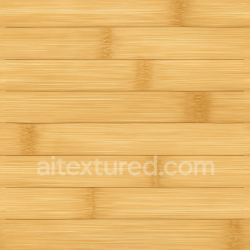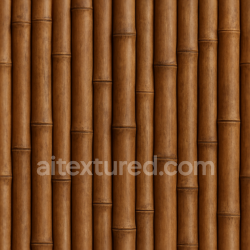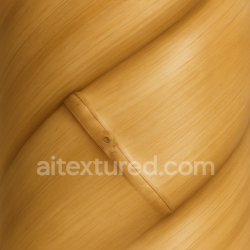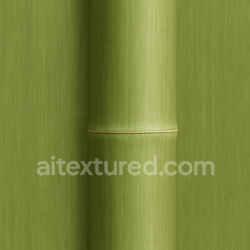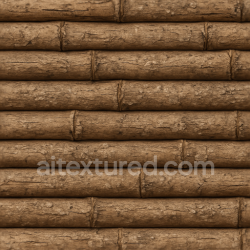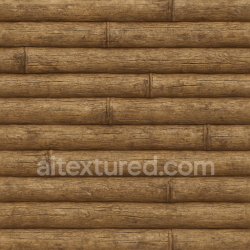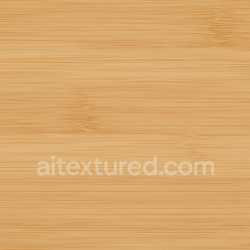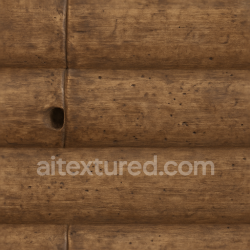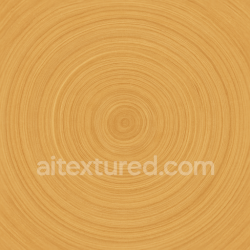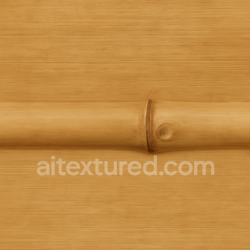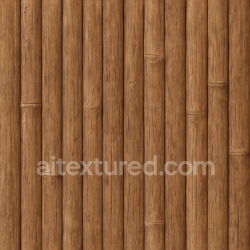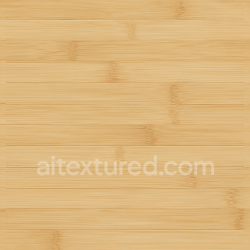Mastering Color Camouflage PBR Textures for Realistic 3D Environments
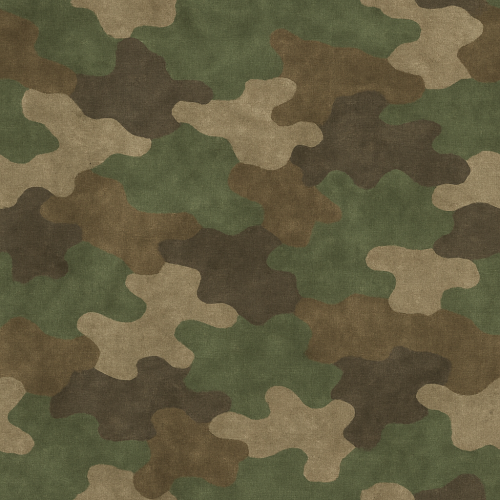
Capturing high-fidelity color camouflage textures for physically based rendering (PBR) workflows demands a rigorous approach to acquisition, as the intrinsic complexity of camouflage patterns—characterized by irregular shapes, subtle tonal shifts, and micro-variations—presents unique challenges. The goal is to obtain a base dataset that not only preserves the intricate color distribution and pattern fidelity but also facilitates the extraction of complementary PBR maps such as roughness, normal, ambient occlusion (AO), and height. Achieving this requires meticulous attention to lighting conditions, scanning or photogrammetric methodology, resolution considerations, and post-capture calibration.
When approaching the acquisition of camouflage textures, the first critical consideration is the lighting environment. Homogeneous, diffuse illumination is paramount to prevent the creation of unwanted shadows or specular highlights that could distort the color data or introduce inconsistencies in micro-surface details. Using a light tent or a dome outfitted with evenly distributed, color-balanced LED panels ensures minimal directional bias. Natural daylight in overcast conditions can be suitable but is less controllable and reproducible. The color temperature of the light must be consistent and calibrated using a spectrophotometer or a calibrated color target placed adjacent to the sample. This step is essential to accurately capture the albedo without baked-in lighting or color casts, which would complicate linearization and gamma correction during texturing.
Resolution dictates the level of micro-pattern detail and the fidelity of subtle tonal transitions within camouflage. For scanning, a high-resolution flatbed scanner designed for materials or an industrial line-scan camera can capture detailed albedo data with minimal distortion. These devices typically offer resolutions exceeding 2400 dpi, which is beneficial for capturing the smallest elements of camouflage patterns, including textile weave or paint granularity. However, scanners are limited to flat or near-flat samples and cannot capture three-dimensional surface variations needed for normal or height map generation.
Photogrammetry is the preferred approach when the material exhibits volumetric features—such as raised fabric textures, painted surfaces with cracks, or composite camouflage layers on gear—requiring accurate normal, height, and AO extraction. A high-quality digital single-lens reflex (DSLR) or mirrorless camera with a fixed focal length macro lens is optimal for capturing the texture. Consistency in aperture is necessary to maintain depth of field and sharpness across all shots. A minimum of 50 to 100 overlapping images, captured from varying angles but tightly focused on the texture area, enables dense reconstruction. The camera sensor’s color response must be profiled to ensure accurate color reproduction, and RAW format capture is recommended to retain maximum color data and dynamic range.
To maximize pattern fidelity, avoid post-capture image processing that alters color balance or introduces contrast changes before texture baking. Instead, handle color correction and gamma linearization within the PBR authoring pipeline, preserving the raw visual data for physical accuracy. When reconstructing the mesh and texture maps from photogrammetry data, use software capable of exporting displacement or height maps alongside normal and AO maps. These maps are critical for simulating the micro-variations in the surface, which affect roughness and reflectance properties crucial to realistic camouflage rendering.
An important aspect of acquisition is the calibration of the captured data against physical references. Using calibrated color charts, such as the X-Rite ColorChecker, within the frame of each capture session provides a baseline for color correction and white balancing during post-processing. Additionally, scanning or photographing neutral grey cards alongside the sample allows for accurate ambient lighting evaluation, which is vital when extracting and normalizing roughness and AO maps. Consistent calibration between sessions ensures that texture sets can be reliably tiled and reused across different assets or environments without perceptual color shifts.
Tiling and seamlessness represent another layer of complexity in camouflage texture acquisition. Many real-world camouflage patterns are designed with breaks and irregularities to mask repetition, but digital texture tiling introduces constraints that can reveal unnatural seams or pattern repetition artifacts. When capturing materials intended for tiling, consider scanning or photographing larger swathes of the material to allow for more flexible texture layout and blending during authoring. Alternatively, capture multiple overlapping samples and use texture synthesis algorithms to generate seamless tile sets while preserving the integrity of the original pattern. In both cases, maintaining pattern continuity and balancing micro-variations across tile edges is essential to avoid visual artifacts in-game or in-renderer.
From the standpoint of PBR workflow integration, the acquisition process must be tailored to generate or support the extraction of all relevant texture maps. While color camouflage primarily relies on the albedo map to convey pattern and color fidelity, the roughness map is equally critical for simulating the surface’s interaction with light. Roughness variation often correlates with the material’s fabric weave or painted surface properties and can be derived from controlled lighting setups using polarized light photography or specular highlight capture techniques. Incorporating multispectral lighting during acquisition can enhance the accuracy of roughness and metallic map derivation, although metallic components in camouflage are rare and generally limited to hardware elements like buttons or buckles.
Normal and height maps are typically reconstructed from photogrammetry data or generated via displacement scans. When using photogrammetry, dense mesh reconstruction followed by baking the high-poly detail onto a low-poly mesh produces accurate normal and height maps. This detail is particularly important for close-up views or when physical interaction with the material is simulated in engine environments such as Unreal Engine or Blender’s Eevee and Cycles renderers. Ambient occlusion maps generated during bake capture subtle self-shadowing within the texture’s micro-geometry, enhancing depth perception and realism.
Optimizing acquired textures for game engines involves ensuring that the captured data translates into efficient, artifact-free assets. Textures should be linearized and converted to appropriate color spaces—sRGB for albedo and linear for roughness, normals, and height—to maintain physical correctness. Compression artifacts must be minimized, especially for albedo and normal maps, as these directly impact perceived material quality. When importing into Unreal Engine, leveraging its built-in texture compression and mipmapping tools can preserve detail while optimizing memory usage. In Blender, proper node setups with linear color management and normal map interpretation ensure fidelity during rendering.
In conclusion, the acquisition of color camouflage textures for PBR workflows is a multidisciplinary process that requires precision in lighting, resolution, calibration, and post-processing. Successful capture facilitates the production of comprehensive PBR texture sets that accurately represent the complex interplay of color patterns and surface micro-geometry inherent in camouflage materials. Adhering to these guidelines ensures that the resulting textures integrate seamlessly into modern rendering pipelines, offering both visual realism and practical efficiency.
Creating effective color camouflage textures within a physically based rendering (PBR) workflow demands a nuanced balance between naturalistic color variation and disruptive patterning. Achieving this balance often requires combining procedural generation techniques with photographic authoring methods, allowing for both precise control over pattern complexity and fidelity to real-world materials. By integrating these approaches, artists can produce camouflage textures that maintain seamless tileability, exhibit convincing micro-variation, and respond accurately to lighting within modern engines such as Unreal Engine and rendering platforms like Blender.
Procedural generation in camouflage texturing begins with leveraging algorithmically defined patterns that simulate the organic irregularities found in natural environments. Unlike purely photographic textures, procedural methods allow for infinite scalability and non-repetitive detail, which are critical when developing large-scale surfaces like military uniforms, vehicle wraps, or terrain coverings. Common procedural algorithms include noise functions (Perlin, Worley, or simplex noise), fractal layering, and Voronoi patterns, which can be combined and manipulated to generate disruptive shapes characteristic of camouflage motifs. These patterns are typically applied to the albedo channel, carefully calibrated to blend natural tones such as olive greens, tans, browns, and muted grays that correspond with the intended environment (woodland, desert, urban, or snow).
When authoring the albedo map procedurally, it is crucial to maintain physically plausible reflectance. Unlike stylized textures, PBR albedo should avoid oversaturation and ensure that the color values do not exceed the reflectance limits of natural materials. This can be verified by referencing the Fresnel reflectance model or using color calibration tools within software like Substance Designer or Blender’s shader editor. Procedural workflows often incorporate layered masks to generate the “disruptive” and “pixelated” elements of camouflage patterns, blending sharp-edged pixelation with soft organic shapes to mimic the micro-variations found in foliage and terrain. These masks can be dynamically controlled through parameters for scale, contrast, and randomness, enabling rapid iteration without reworking base imagery.
Photographic authoring complements procedural methods by providing a foundation of realistic texture detail captured from natural surfaces. High-resolution photographs of fabric, bark, soil, or foliage offer invaluable micro-detail—such as fiber weave, dirt accumulation, or leaf venation—that enhance the believability of camouflage textures. Crucially, these photographs must be carefully processed to fit within PBR workflows. The albedo map derived from photos must be desaturated and color-corrected to remove baked-in shadows and highlights, which can otherwise interfere with the physically based lighting model. Techniques such as high-pass filtering or frequency separation in photo editing software like Adobe Photoshop or Affinity Photo help isolate the color information from lighting, preserving material consistency.
To maintain seamless tileability, photographic sources often require extensive editing or cloning, especially when used for large surfaces. Tools like Photoshop’s offset filter combined with healing brushes or content-aware fills enable artists to break visible seams. However, tileability challenges are mitigated when photographic textures are combined with procedural masks. For instance, overlaying a procedurally generated disruptive pattern onto a photographic base allows the pattern edges to mask seams and introduce controlled randomness, which reduces perceptible repetition when tiled.
Beyond albedo, procedural and photographic methods extend into the creation of complementary PBR maps. Roughness maps for camouflage textures are typically low in metallic content, as most natural fabrics and surfaces are dielectric. Procedurally generated noise patterns can simulate the subtle roughness variations caused by fabric weave, dirt, or moisture absorption. By using grayscale noise layers with controlled contrast, these roughness maps can introduce micro-roughness variation that breaks uniform specular reflections, enhancing realism under dynamic lighting. Photographically sourced roughness or gloss maps require desaturation and contrast adjustments, often derived from specular or reflectance photographs. Combining procedural noise overlays on photographic roughness ensures that large-scale patterns do not produce artificial uniformity in glossiness.
Normal maps are essential for adding perceived surface detail and depth to camouflage fabrics or surfaces without increasing geometry complexity. Procedural normal map generation can be achieved by converting noise textures or height maps into tangent space normals using tools like Substance Designer or Blender’s displacement-to-normal nodes. Photographic height maps generated from displacement or ambient occlusion passes can be converted similarly. The key is to maintain a consistent scale of detail, ensuring that normal variations correspond to micro-fabric textures or subtle terrain undulations rather than large-scale pattern boundaries. Procedurally generated micro-normal variation can be layered over photographic normal maps to avoid unnaturally smooth surfaces.
Ambient occlusion (AO) maps represent localized shadowing and are often baked from 3D models; however, procedural AO can supplement or enhance these baked maps by simulating dirt accumulation or crevices within fabric folds or seams. Photographic AO extracted from real-world fabric or terrain scans can also inform the intensity and distribution of occlusion in the texture. Using AO maps as a multiply layer in albedo or roughness workflows helps anchor the camouflage patterns within the surface’s perceived volume and depth, reinforcing the disruptive effect.
Height maps or displacement maps are particularly useful in PBR camouflage to simulate fabric thickness, folded seams, or surface roughness that impacts silhouette and shadowing. Procedural height maps can be generated using layered noise and mask functions, allowing artists to define specific areas of relief that correspond to pattern edges or fabric texture. Photographic height maps, often derived from photogrammetry or focus stacking techniques, provide highly accurate surface profiles that can be integrated into the displacement channel. When authoring height maps, careful calibration of displacement scale is vital to prevent exaggerated surface distortions that would break realism or cause shading artifacts in engines.
Metallic maps are generally not used in camouflage textures unless simulating specific hardware components or reflective elements embedded in the fabric. In most cases, the metallic channel is set to zero or masked out entirely, as camouflage materials are typically non-metallic.
Optimization for real-time engines like Unreal Engine or physically based renderers in Blender requires a balance between texture resolution, channel packing, and shader complexity. Combining procedural generation with photographic details allows for efficient texture reuse and dynamic pattern variation. For example, generating base camouflage patterns procedurally and layering photographic fabric detail as a detail map reduces the need for extremely high-resolution albedo textures. Channel packing—bundling roughness, metallic (if any), and height or AO into single texture files—can minimize draw calls and memory usage. Using engine-specific tools, such as Unreal Engine’s layered material system or Blender’s node-based shader editor, artists can create parameterized camouflage materials that respond dynamically to environment lighting and enable runtime variation, such as dirt accumulation or wetness.
Practical tips when authoring camouflage textures include maintaining physically plausible albedo values by referencing measured reflectance data, avoiding color clipping or oversaturation, and ensuring seamless tileability by combining procedural masks with photographic bases. Micro-variation is crucial and can be achieved by layering subtle noise in roughness and normal maps to break up uniform reflections and surface smoothness. Calibrating roughness and normal intensity to match the scale of the camouflage pattern prevents visual dissonance, such as overly pronounced fabric weave on large pattern patches. Finally, iterative testing within the target engine or renderer is essential, as PBR materials can appear drastically different under various lighting conditions and viewing distances. Procedural authoring tools and non-destructive photo editing workflows facilitate this iterative process by enabling rapid adjustments without rebuilding entire texture sets.
In sum, the integration of procedural generation and photographic authoring methods offers a robust strategy for creating color camouflage textures that are both physically accurate and visually disruptive. This hybrid approach capitalizes on the strengths of each method—procedural flexibility and photographic realism—while addressing common PBR challenges such as tileability, micro-variation, and channel optimization. Properly executed, these workflows yield camouflage materials that perform convincingly across diverse lighting environments and applications, from game engines to high-end offline rendering.
Creating physically based rendering (PBR) maps for color camouflage fabrics requires a meticulous approach to accurately capture both the macroscopic pattern and the microscopic surface characteristics that define the material's optical and tactile properties. The goal is to produce a set of textures that work in concert to faithfully simulate the interaction of light with complex textiles such as ripstop nylon or woven cotton blends, while also accommodating the subtle weathering and environmental effects that these materials experience in use. This process hinges on an understanding of each PBR channel—albedo, normal, roughness, ambient occlusion (AO), height, and where relevant metallic—and how to generate and calibrate them for optimal results in modern render engines like Unreal Engine or Blender’s Cycles/Eevee.
Starting with the albedo map, it is essential to produce a base color texture that accurately represents the color camouflage pattern’s hues and tonal variations without baked-in lighting or shadows. For textiles, this means capturing the diffuse color of the fibers and the printed pattern with high fidelity, ensuring that no specular highlights or shading distortions are embedded. When working from photographic sources, it is advisable to use controlled lighting setups—preferably diffuse, neutral illumination—to avoid color casts and to remove shadows via retouching or photogrammetric processing. The albedo should represent the intrinsic color of the material as if illuminated evenly from all directions. This is especially critical for camouflage patterns, where subtle shifts in color and contrast define the disruptive visual effect. The fabric’s weave or ripstop grid should be reflected subtly in the albedo if it influences coloration, but more prominent surface details belong in the normal or height maps.
Developing the normal map for camouflage fabrics involves capturing the micro-geometry of the textile surface, including the weave pattern, ripstop reinforcements, and any surface irregularities such as fraying or slight puckering. These small-scale features are crucial for breaking up light reflections and enhancing realism. Photogrammetry and high-resolution scans can provide an excellent starting point, but often require refinement to prevent introducing noise or unnatural artifacts. When authoring normal maps procedurally or through software like Substance Designer or CrazyBump, it is important to calibrate the intensity to match the scale of the fabric weave; over-exaggerated normals will cause unrealistic shading, while underwhelming details will produce a flat, lifeless surface. The ripstop pattern, which consists of thicker threads woven at regular intervals, should be subtly raised in the normal map to catch light differently compared to the finer weave. This differentiation helps simulate the tactile quality of the fabric and supports the camouflage’s structural authenticity.
Roughness maps are arguably the most nuanced channel when working with fabric materials, as they define how light scatters microscopically across the surface. Unlike metals or plastics, fabrics generally exhibit high roughness values due to their fibrous nature, but the roughness is not uniform. For example, ripstop nylon often has a slightly smoother finish on the thicker reinforcement threads and a more matte appearance on the woven base. The roughness map should replicate this variation to influence specular highlights accurately. Additionally, weathering effects such as abrasion, dirt accumulation, and sun bleaching alter the roughness locally. These changes typically increase roughness by disrupting the fiber surface or deposit particulate matter that scatters light diffusely. Creating the roughness map can involve layering procedural noise and hand-painted masks to simulate these micro-variations. Calibration against reference materials, ideally using real-world fabric samples under comparable lighting, ensures that the roughness values fall within physically plausible ranges, preventing materials from appearing overly glossy or unnaturally dull.
Ambient occlusion (AO) maps in fabric PBR workflows serve to enhance perceived depth and contact shadows within the weave and pattern folds, especially in areas where threads overlap or the ripstop grid creates subtle recesses. While AO is often baked from geometry in hard surface models, for fabrics it requires a more artistic approach since the underlying mesh may not capture micro-geometry adequately. A combination of baked AO from high-resolution displacement or normal maps and hand-painted masks can help simulate the soft shadowing between woven threads and seams. The AO map should be subtle and carefully integrated to avoid excessive darkening that can obscure the camouflage pattern or distort overall lighting. In engines like Unreal, AO typically multiplies the indirect lighting term, so its intensity must be balanced to complement global illumination rather than overpower it.
Height maps or displacement maps, though not always necessary for fabric materials, can add an additional layer of realism when supported by the rendering engine and hardware. Height maps encode fine surface relief information, such as the raised ripstop threads or the slight undulations of a woven textile. When used in parallax occlusion mapping or tessellation, these maps create convincing depth cues that enhance silhouette complexity and shadowing. Crafting height maps involves converting grayscale data from scanned fabric surfaces or procedural patterns, with careful attention to scale and contrast to prevent exaggerated distortions. Optimization is critical here, as excessive tessellation can impact performance and introduce artifacts; thus, height maps should focus on the largest perceptible details rather than every fiber strand.
The metallic map is generally not applicable for camouflage fabrics, as textiles are non-metallic by nature. This map should be left black (zero) to ensure the material behaves correctly within the PBR shading model, reflecting light diffusely without metallic reflection characteristics.
Tiling and scale considerations play a fundamental role in fabric PBR texture authoring. Camouflage patterns often span large surface areas and must tile seamlessly without visible repetition or pattern artifacts. Achieving this requires careful pattern design and texture layout, ensuring that the macro pattern repeats naturally while the micro-variation in weave and surface detail prevents obvious tiling. Techniques such as introducing subtle noise overlays, randomizing fiber direction, or blending multiple texture layers can break uniformity. Additionally, the texture resolution must match the intended viewing distance and engine constraints; overly large textures waste resources, while low resolution undermines detail fidelity. Calibration against the UV scale in the 3D model and consistent texel density across assets ensures that the camouflage pattern and fabric details appear cohesive and realistic.
When importing and configuring these maps in Unreal Engine, it is critical to set correct compression and color spaces. The albedo texture should be sRGB to preserve accurate color representation, while normal, roughness, AO, and height maps require linear color space to maintain data integrity. Unreal’s material editor allows for combining AO and roughness maps efficiently, often packing AO into the red or green channel of the roughness map to optimize texture usage. Similarly, height maps can be utilized in tessellation or parallax occlusion nodes, with parameters tuned to balance visual fidelity and performance.
In Blender, managing these textures involves connecting them appropriately within the Principled BSDF shader node. The albedo feeds into Base Color, normals into the Normal input through a Normal Map node, roughness into Roughness, and AO can be multiplied with the diffuse or used as a separate multiply node before the shader input. Careful node graph organization and texture influence adjustments allow for fine-tuning the fabric’s appearance under various lighting conditions.
Simulating weathering effects in PBR maps requires an integrated approach across all channels. For instance, dirt or mud deposits darken and desaturate the albedo, increase local roughness due to particulate scattering, slightly alter the normal map by filling in fine weave details, and amplify AO where creases trap grime. Sun bleaching reduces color saturation and increases roughness while potentially softening normal map sharpness as fibers degrade. These effects are best authored as separate mask layers that can be blended non-destructively, enabling variations across assets or real-time parameter control within the engine.
In summary, generating accurate PBR textures for color camouflage fabrics demands an iterative workflow that balances photographic fidelity, procedural refinement, and physical plausibility. Each map must be carefully authored and calibrated to represent the complex interplay of fabric structure, pattern, and environmental wear. Attention to tiling, micro-variation, and engine-specific texture management ensures the final material performs well visually and computationally. Through this disciplined approach, artists can achieve highly realistic and versatile camouflage materials suitable for interactive and cinematic applications alike.
